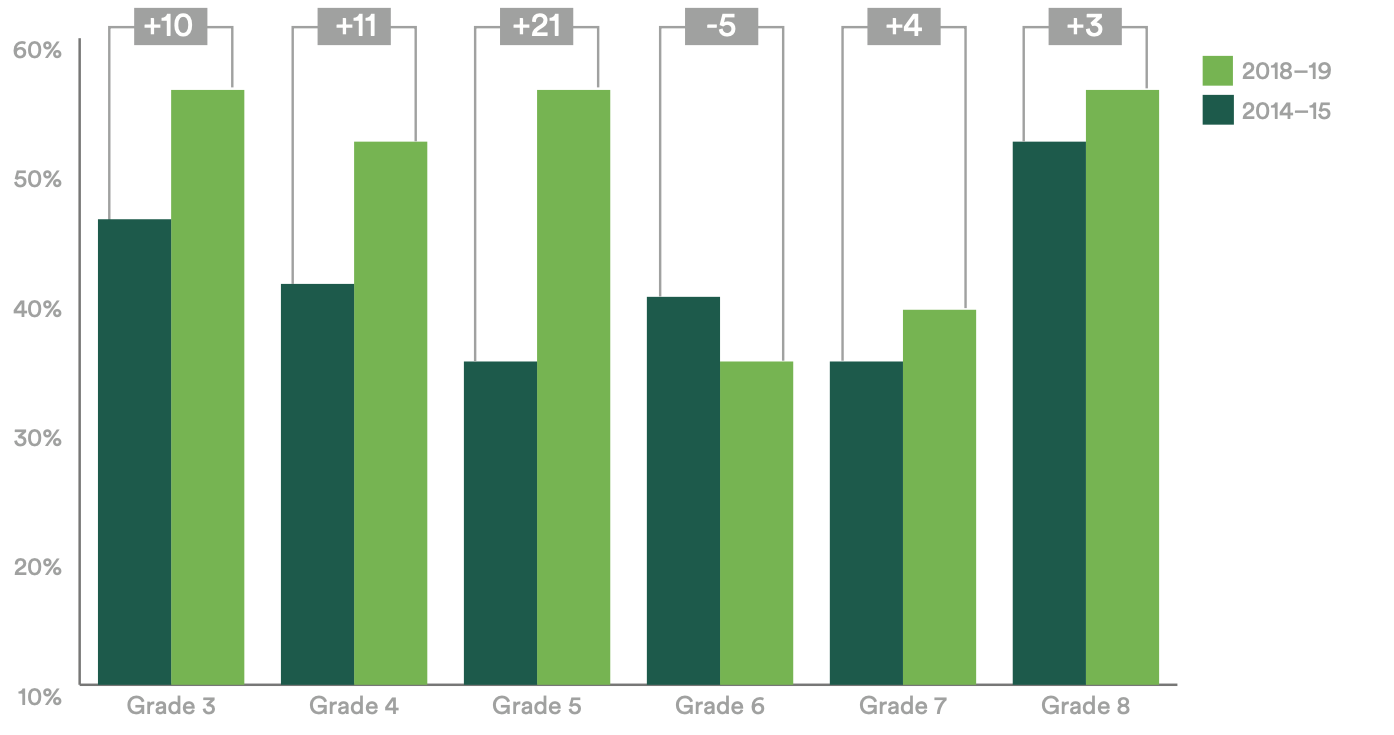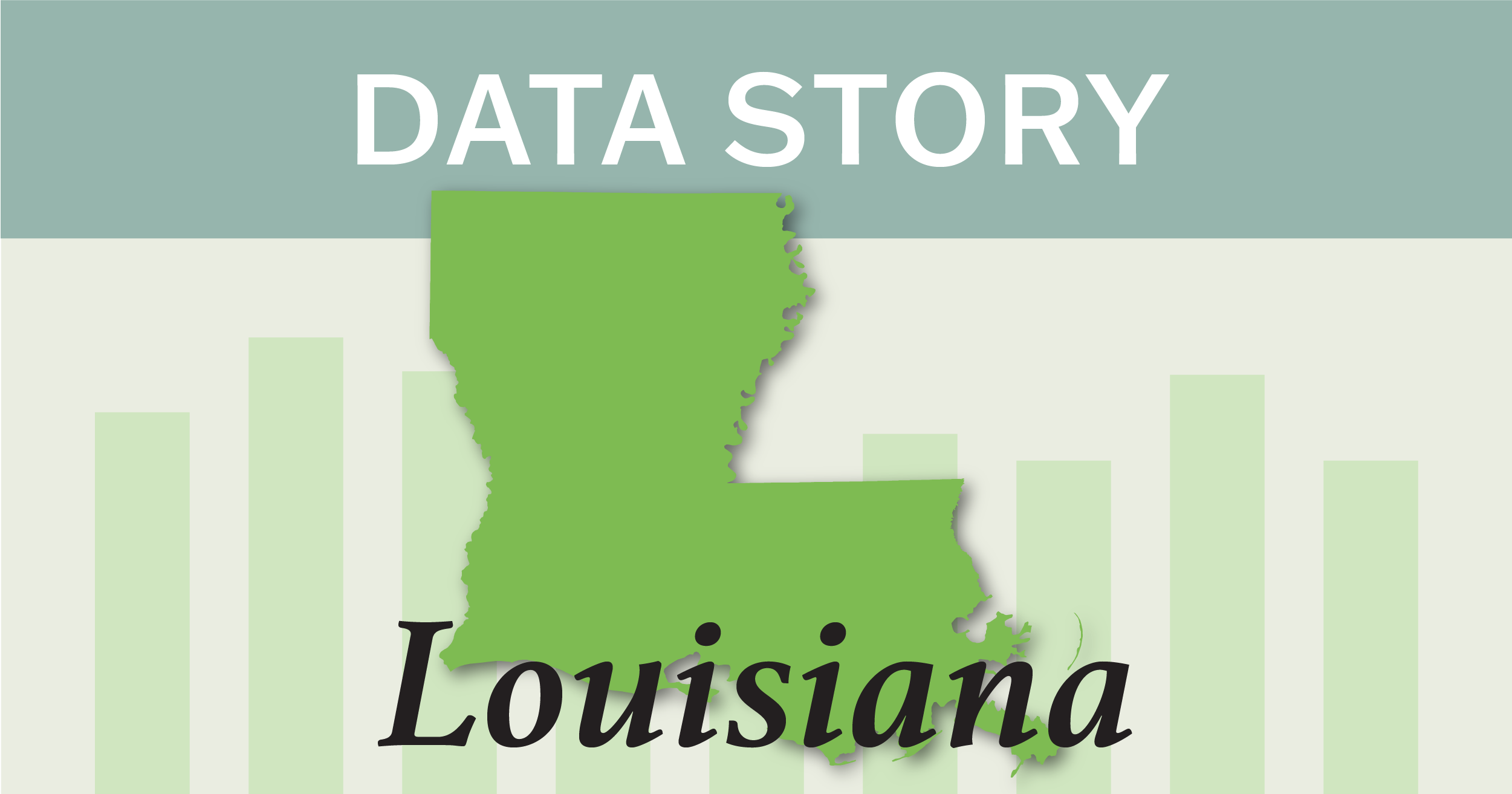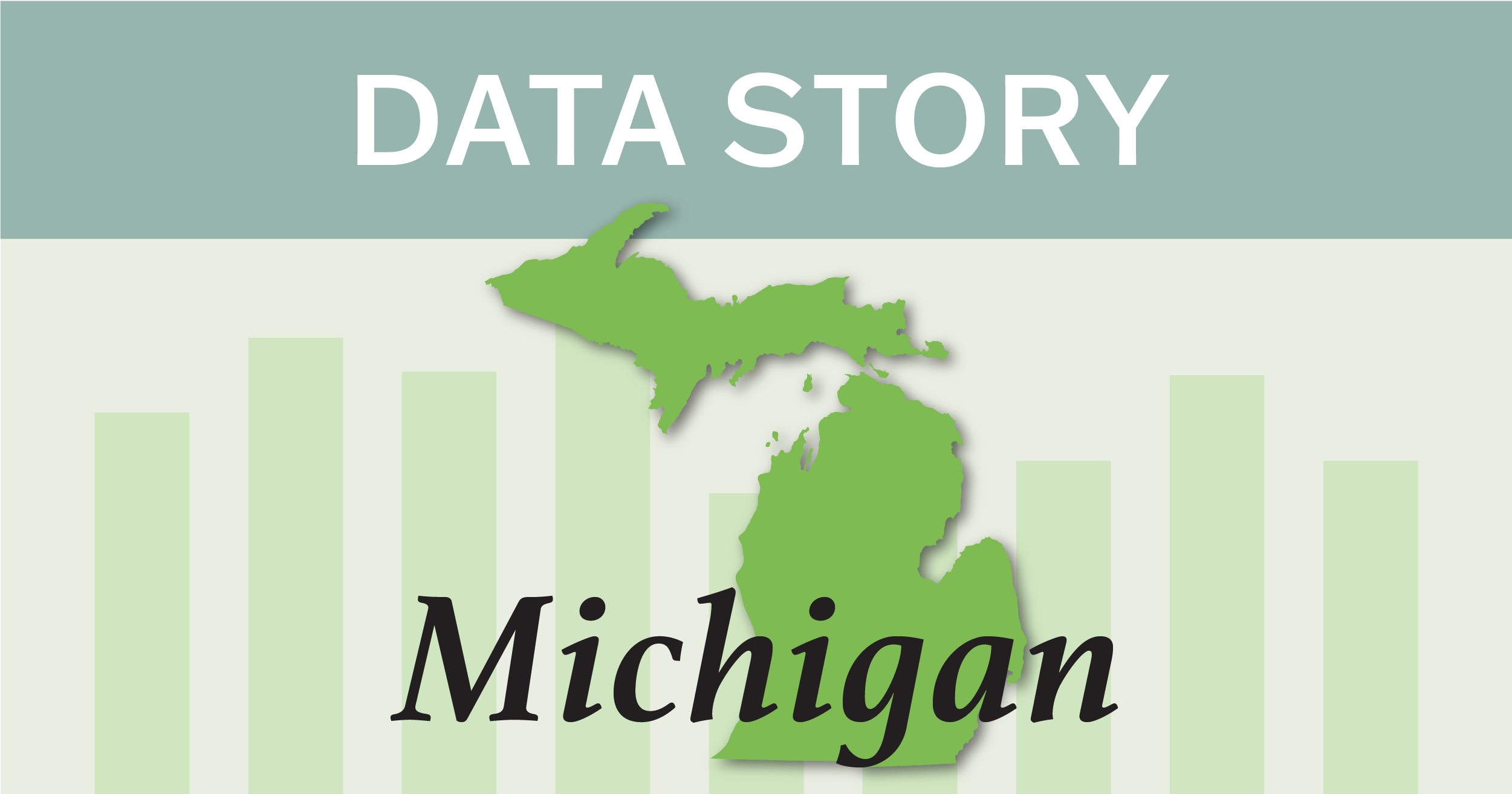Posted in: Aha! Blog > Eureka Math Blog > Teacher Engagement Professional Development Data Stories Student Achievement > Steady Gains for this Early Adopter of Eureka Math®
For educators in West Feliciana Parish Schools near Baton Rouge, Louisiana, Superintendent Hollis Milton says the Eureka Math® “lightbulbs” came on early, starting with teachers such as Tonya Aaron, who attended early trainings held at Louisiana State University’s Cain Center in 2013. (Cain Center scholars were the lead curriculum developers for EngageNY Math, as Eureka Math originally was known.)
DISTRICT PROFILE
4 schools
2,245 students
Milton says the enthusiasm of teachers like Aaron was contagious. “It had a flywheel effect. We built so much knowledge and capacity.” The teachers embraced the new standards-based curriculum much more quickly than Milton thought they would.
The impact of Eureka Math is evident in rising student achievement. Grades 3–8 proficiency scores on the state LEAP test rose an average of 7.3 percentage points between 2015 and 2019. West Feliciana now ranks fourth statewide in mathematics for the percentage of students performing at the mastery level and above on the 2018 LEAP assessment.
GAINS IN EVERY GRADE SINCE 2015
% of students scoring mastery level or above on LEAP test, 2015–19

The gains show up in classrooms as well. “Students have a stronger foundation of math skills,” says Zanovia Curtis, West Feliciana’s supervisor of elementary education and federal programs. “They can think more deeply about math. And they’re using classroom conversations to work through challenges.”
The students are engaged and excited. “They have hands-on moments,” says Aaron. They have opportunities to discuss their thinking. They see the impact they have on their own learning.”
“BINGO” FROM DAY ONE
It all started with Aaron, at the time a kindergarten teacher at Bains Lower Elementary School. The math program she used wasn’t inspiring, and she wanted to improve her practice. After attending a Cain Center training on EngageNY Math (now Eureka Math) in July 2013, she was hooked. “They sold me on the curriculum the first day. I saw what was possible with number sense and student engagement. It was like, Bingo, that’s what I want to do in my class,” recalls Aaron, now an instructional specialist at the school.
She recruited a colleague to attend a second training and she also became convinced. “We were like groupies that summer, attending trainings wherever we could all over the state,” says Aaron.
Aaron was even more impressed once she saw how the curriculum affected her students. She says that math used to bore them. But now they were leaving recess asking, “When can we do math?” Aaron says. By the end of that first year, Aaron was mainly serving as a facilitator, with the students taking charge of the learning. “I introduced the lesson,” she says, “but they knew what to do from there. It was amazing.”
Since then, with strong support from administrators and word-of-mouth endorsements from early adopters like Aaron, the curriculum has extended districtwide. Even three-year-olds in the Head Start program now use materials patterned after Eureka Math.
“The difference between Eureka Math and other curricula is that it requires the students to obtain a deeper level of thinking and a strong foundation for students in early childhood,” says Bains Lower Elementary Principal Andrea Mathis.
ONGOING PROFESSIONAL DEVELOPMENT
As is true of other districts, much of West Feliciana’s success is attributable to strong professional development. Grade-level professional learning communities meet weekly to plan lessons and discuss common issues. During staff development days, teachers across grades meet to share insights. The school’s data team meets regularly so that teachers and coaches can review assessment information and establish instructional priorities and student grouping for future lessons.
"Students have a stronger foundation of math skills. They can think more deeply about math. And they're using classroom conversations to work through challenges."
—Zanovia Curtis, supervisor of elementary education and federal programs
The district also hosts Prime Time Interventions and What I Need (WIN) sessions that give students who are behind 30 minutes of tailored instruction, individually or in groups up to four. In addition, West Feliciana staff members have participated in some math professional development offered by Great Minds and will partner with them for additional training for Eureka Math, as well as Wit & Wisdom and PhD Science, the ELA and science curricula.
The district also has instructional coaches in every school who provide job-embedded professional support.
“Having teachers share their practice has been a major shift for us,” says Milton. Curtis adds, “Teachers here are treated as professionals. We have honest conversations.”
While good collaboration and information exchange may streamline implementation, there are no shortcuts. “You have to prepare. You have to do the lessons. You have to get organized,” says Aaron. “There is lots of work for teachers in the beginning, but the payoff is huge.”
Her advice to educators using Eureka Math for the first time: “It may look intimidating. It may not be what you’re used to. But take a deep breath. Dive in. Stick with it. And watch your children grow. You’ll be amazed.”
|
Parent Resources To help parents understand Eureka Math’s lessons, West Feliciana shares a number of resources on its website, including these videos. http://www.wfpsb.org/article/115219 |
Submit the Form to Print

Jenny Taylor
Jenny has over a decade of experience in education policy and research. She has worked with states and districts on the development and implementation of college and career readiness policies, especially around the implementation of rigorous standards and high-quality instructional materials. She has extensive knowledge about K–12 standards, graduation requirements, assessments, and accountability systems nationwide. Additionally, she has conducted research for school districts to address pressing needs in those districts. Jenny received her B.A. in English and education from Bucknell University and her M.Ed. in education policy from the University of Pennsylvania Graduate School of Education.
Topics: Teacher Engagement Professional Development Data Stories Student Achievement











